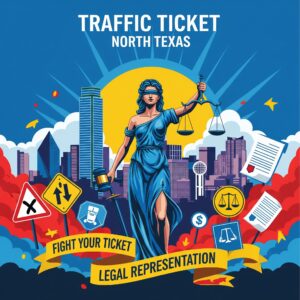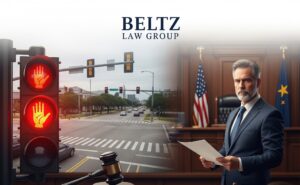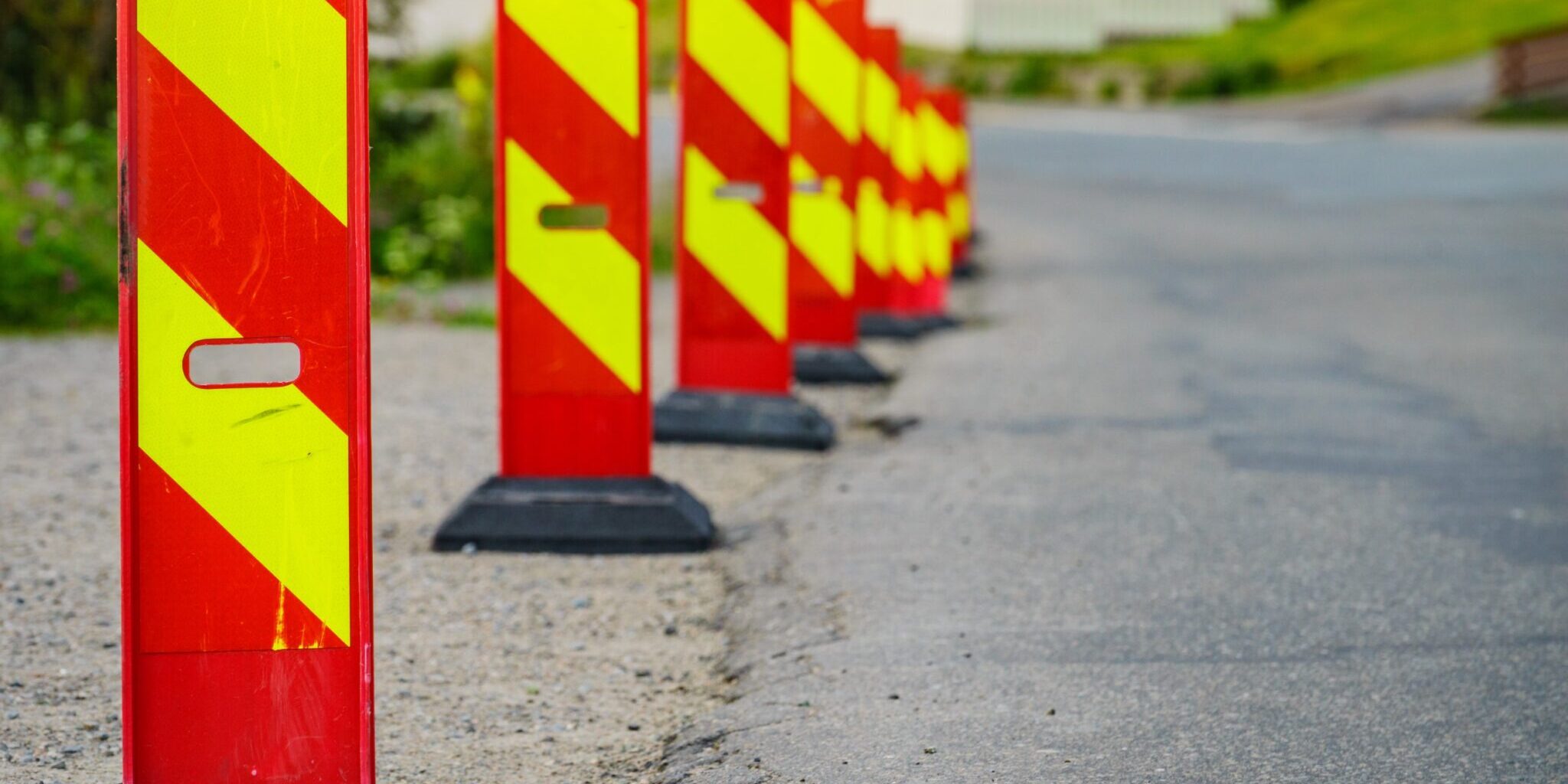Last Updated on July 23, 2025 by Beltz Law Group
Disobeying Warning Signs and Barricades in Texas: Understanding the Law and Your Defense

Traffic Ticket Defense Texas
At Beltz Law Group, our traffic ticket attorneys frequently defend clients accused of disobeying warning signs and barricades. These types of citations, while seemingly straightforward, involve specific legal nuances that can significantly impact your driving record and financial well-being. This article will outline the applicable Texas law, discuss potential defenses, and explain why protecting your record is crucial.
If you’ve been charged with disobeying a warning sign or barricade and would like to discuss your case with an experienced attorney, please call us today.
The Governing Law: Texas Transportation Code Section 472.022
The primary statute addressing the offense of disobeying warning signs and barricades is Texas Transportation Code Section 472.022. OBEYING WARNING SIGNS AND BARRICADES. It’s important to note that because warning signs and barricades are also classified as “traffic control devices,” the principles discussed in our article about “Disregard Traffic Control Device” tickets (referencing Texas Transportation Code Chapter 544) can also apply as a defense strategy.
Let’s break down Section 472.022 in detail:
Sec. 472.022. OBEYING WARNING SIGNS AND BARRICADES.
(a) What Constitutes the Offense: A person commits an offense if they:
- Disobey the instructions, signals, warnings, or markings of a warning sign; OR
- Drive around a barricade.
(b)

Traffic Ticket Defense Attorney
Exceptions (When the Law Does NOT Apply): This section does not apply to:
- A person who is following the directions of a police officer. (If an officer directs you to go around a barricade, you are exempt.)
- A person (including employees of TxDOT, a political subdivision, or a contractor/subcontractor) whose duties require them to go beyond or around a barricade. (This protects authorized personnel working in the area.)
(c) Separate Offenses: Each individual violation of this section is considered a separate offense.
(d) Penalties (Fines Vary by Circumstance): An offense under this section is a misdemeanor, with fines varying significantly based on the context:
- General Offense: Punishable by a fine of not less than $1 or more than $200.
- Construction or Maintenance Work Zone (Workers Present): If the offense occurs in a work zone when workers are present, and the ticket explicitly states that workers were present, the fine increases to not less than $2 or more than $400.
- Water Over Roadway (“Don’t Drown, Turn Around”): This is the most severe penalty. If the offense occurs where a warning sign or barricade was placed because water is over any portion of the road, street, or highway, the offense is elevated to a Class B misdemeanor. This can carry a fine of up to $2,000 and even jail time of up to 180 days. This reflects the serious danger posed by driving through flooded roadways.
(e)

Traffic Ticket Defense Attorney
Key Definitions: This subsection provides important definitions for the terms used in the statute:
- “Barricade” means an obstruction:
- (A) Placed on or across a road by TxDOT, a political subdivision (like a city or county), or an authorized contractor/subcontractor during construction, repair, or dangerous conditions; AND
- (B) Placed specifically to prevent the passage of motor vehicles over the road.
- “Construction or maintenance work zone” means a portion of a highway or street where construction/maintenance is active (excluding mobile operations), and which is clearly marked by signs indicating:
- (A) It is a construction or maintenance work zone;
- (B) Where the zone begins and ends; and
- (C) The warning: “Fines double when workers present.”
- “Warning sign” means a signal, marking, or device placed on a barricade or roadway during construction, repair, or dangerous conditions by an authorized entity (TxDOT, political subdivision, contractor/subcontractor) to warn or regulate motor vehicular traffic. This also includes a flagger deployed to direct traffic in such conditions.

North Texas Traffic Ticket Defense Attorney
Interpreting the Law: Key Elements for the Prosecution to Prove
At first glance, the law seems straightforward: don’t ignore signs or go around barricades. However, a closer look reveals specific elements the prosecution must prove for a conviction. An experienced traffic ticket attorney will scrutinize these elements:
- Authorized Placement of the Device: Section 472.022(e) clearly defines “barricade” and “warning sign” as being placed “by the department [TxDOT], a political subdivision of this state, or a contractor or subcontractor under authorization of the department or a political subdivision.” This is a critical point: The prosecution must prove that the barricade or warning sign was not just there, but that its placement was properly authorized by the relevant government entity. If they cannot provide proof of this authorization (e.g., permits, internal departmental records), they may not have met all the elements of the crime as defined by law. An experienced traffic ticket attorney will often request this proof through the discovery process if a case is going to trial.
- Compliance with the Uniform Traffic Control Device Manual: As mentioned, warning signs and barricades are types of traffic control devices. Therefore, they must comply with the Texas Manual on Uniform Traffic Control Devices (TMUTCD). This means the signs and barricades must be:
- In proper position: Placed according to the precise specifications (height, location, etc.) outlined in the TMUTCD for that type of device.
- Sufficiently legible to an ordinarily observant person: The sign or barricade must be clear, visible, and understandable to a reasonable person driving under normal conditions. This is an objective standard, not subjective (i.e., it doesn’t matter if you personally couldn’t read it, but whether a reasonable person could). If the warning signs or barricades were not properly placed or were not sufficiently legible, this can be a strong area to challenge the charge at trial.
The Importance of Protecting Your Driving Record

Traffic Ticket Defense Attorney in North Texas
Disobeying a warning sign or barricade is a serious moving violation, and its consequences extend far beyond just the fine. A conviction can lead to:
- Points on your driving record: These accumulate and can eventually lead to state surcharges.
- Increased insurance rates: Insurers view moving violations as indicators of higher risk, often resulting in significantly higher premiums.
- Driver’s license suspension: Accumulating too many points or certain types of violations can result in your license being suspended, making it illegal to drive.
- A criminal record: Even though it’s a misdemeanor, a conviction becomes part of your criminal history.
- Enhanced penalties for “Don’t Drown, Turn Around” violations: As noted, driving around barricades for water on the road is a Class B misdemeanor, carrying potential jail time.
For these reasons, simply paying the fine and accepting a conviction is often not in your best interest.
Hire an Attorney for Your Disobeying Warning Sign or Barricade Case

Traffic Ticket Defense in North Texas
Navigating the intricacies of the Texas Transportation Code, understanding the TMUTCD, and effectively challenging the elements the prosecution must prove requires legal expertise. An experienced traffic ticket attorney from Beltz Law Group can:
- Investigate the authorization and placement of the warning signs or barricades.
- Assess compliance with the TMUTCD’s requirements for legibility and position.
- Negotiate with the prosecutor for a dismissal, deferred disposition, or a reduction of the charge to protect your driving record.
- Represent you vigorously in court if a trial becomes necessary.
Don’t let a “disobeying warning sign or barricade” ticket negatively impact your driving privileges and future. Contact Beltz Law Group today at 214-321-4105 to discuss your case and explore your best defense options.







